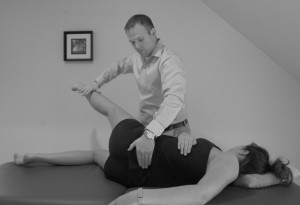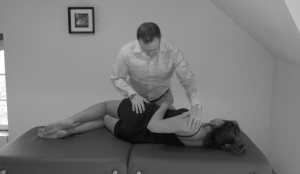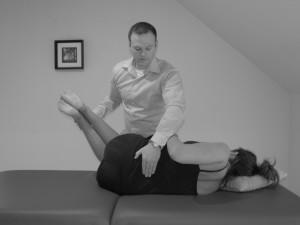
Left on right sacral torsion correction
LEFT ON RIGHT SACRAL TORSION CORRECTION 7/17/16
This is an osteopathic manipulation technique for a sacral dysfunction. More specifically a sacrum that is rotated left on the right oblique axis. This dysfunction can cause intense pain in the low back and/or down the legs. This is one of the problems people often have if they have had therapy or chiropractic care in the past without much help. Unless the dysfunction is corrected, the pelvis and lumbar spine will never move appropriately and pain may never go away. Manual therapy is very helpful in correcting these dysfunctions.

Preparing for Right FRS at L5 correction
RIGHT FLEXED, ROTATED, SIDE BENT L5 (R FRS L5)
When a sacral torsion is present, their is also ALWAYS a dysfunction at the L5 vertebrae. This is due to how the sacrum and lumbar spine interact with each other. The picture shows the set up for the right FRS L5. This has to be corrected out before the torsion is corrected. Again, an easy diagnosis and treatment for someone trained in osteopathic treatment techniques specializing in manual therapy.

Right ERS dysfunction set up for treatment
RIGHT EXTENDED, ROTATED, SIDE BENT L3 (R ERS L3)
This is another dysfunction that can occur at the lumbar spine. Instead of the spine having an FRS dysfunction, it can also have an ERS dysfunction. These dysfunctions are also easily corrected by manual therapy and can also occur in the presence of a sacral torsion and an FRS in the lumbar spine. When the ERS is at L5 vertebra, their is often a posterior unilateral sacral nutation also present.